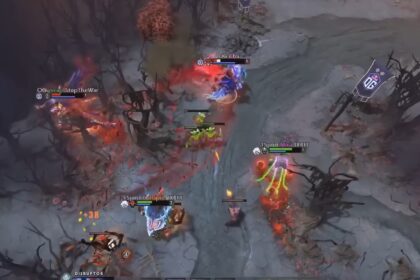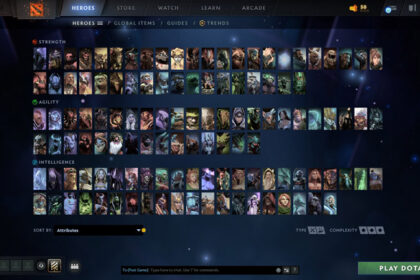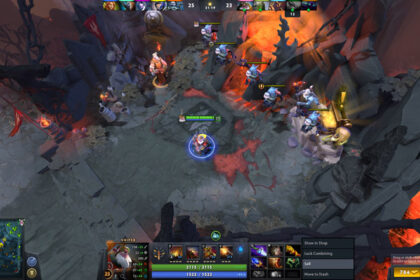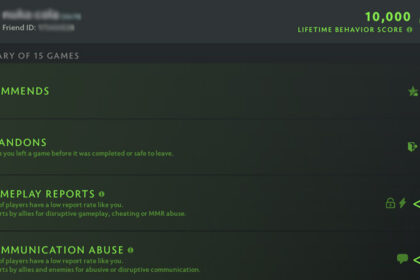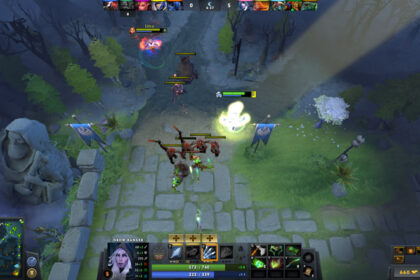When selecting a position, many Dota 2 players prefer the carry or mid-lane role. And who can fault them? Players in this position usually receive all the glory.
Still, the importance of support players cannot be understated. They orchestrate a lot of what is going on in the game and have to make sure that their cores are getting the farm and experience they need. Supports also have to be able to read the map well. These reasons, among several others, are why the captain of a professional Dota 2 team is usually a support player.
If you are going to assume the Position 4 or 5 role and cannot decide who to play, this guide lists the best support heroes in Dota 2.
The Best Supports
There will never be a definitive list of the best support heroes in Dota 2. Because it is dependent on the current meta and your team’s strats for the match.
To give you an example, during The International 2019 (TI 9), the most-contested supports were Elder Titan, Shadow Demon, and Ogre Magi. In the previous edition of the prestigious tournament, the most-used support heroes were Vengeful Spirit, Dark Willow, and Silencer.
However, there are support heroes that will always be relevant and have the power to slay no matter what the current meta is.
For Novice Players
Ogre Magi

One of the tankiest support heroes, Ogre Magi has the ability to give your team the momentum or turn the tide of the match because of his spells and health pool.
Because he is relatively difficult to kill, he can survive longer in team fights and do plenty of damage. His skills also make him more effective in controlling fights in your team’s favor.
His first skill Fireblast can help initiate clashes and save allies, while his Ignite ability applies a significant debuff on enemy heroes. Ogre Magi is also beloved for his knack for buffing up teammates with Bloodlust, a skill that increases the movement and attack speeds of targeted heroes.
Ogre Magi is a great support hero for beginners because of his durability and the straightforwardness of his abilities.
Bane

Bane is also another good, if not underrated, option for Position 4 or 5.
He has one of the most effective saves in the game in Nightmare. When one of your teammates is being kited or chain-stunned, Bane can cast Nightmare on that hero to give him enough time or opportunity to recover. The spell can also be used on an enemy to prevent him from attacking or escaping.
Bane has one of the most powerful disables in Dota 2. His ultimate Fiend’s Grip fully disables the targeted hero, which you can use on beefy enemy cores or opposing supports before they can cast their spells.
For Mid-Level Players
Rubick

Rubick, the Grand Magus, remains a popular selection among support players because of his versatility.
He is best known for his ultimate Spell Steal, which allows him to copy the most recently used spell of the targeted enemy hero. If you see the opposing team’s draft and see that some of their heroes have a valuable spell you can take for your own, such as disables and repositioning spells, selecting Rubick is definitely a solid choice.
But do not get it wrong, this hero has plenty of uses other than his ultimate. His Telekinesis is a pretty good disable that can stun several enemies of you land it correctly, and Fade Bolt can dish out significant damage and reduce the attack damage of affected heroes.
Shadow Demon

Shadow Demon is a very capable offensive and defensive support that can nuke and dispel opponents.
His first ability Disruption can set up team fights or, when timed properly, save an ally from dying to chain spells and attacks from enemies. Shadow Demon can also deal a lot of damage through Soul Catcher and Shadow Poison.
This demon is a nightmare for strong core opponents who rely on buffs to dominate the game. His ultimate Demonic Purge dispels the targeted enemy and slows them down for several seconds.
The hero can be effective in every phase of the game, especially in the hands of an experienced Dota 2 player. If you plan on mastering Shadow Demon, be sure to study how to position properly him in team fights and time your spells correctly.
For Experts
IO

There was a time when IO was just known as one of the best support heroes in Dota 2. TI 9 changed that after the champions OG used him in a carry role in several undefeated matches. Still, the Wisp remains one of the best supports in the game — regardless of the meta.
No other hero can regen and buff its teammates more effectively than IO because of Tether. And when you use Overcharge, the tethered unit gain bonus attack speed, spell amplification, and health regen.
His ultimate Relocate is still one of the best two-way spells in Dota 2. It can either save an ally from almost certain death or transport you and your teammate anywhere on the map for a gank or a team fight.
IO requires a lot of practice to learn and master. Furthermore, the hero works best when used by a communicative team.
Oracle

One of the strongest defensive supports in the game, Oracle is usually a heavily contested hero in the drafting phase of many Dota 2 tournaments.
He has so much to offer in every part of a match. Fortune’s End roots and purges enemies; Fate’s Edict disarms enemy heroes (which is a good spell to use on right-click opponents); and Purifying Flames can nuke down foes or heal allies. Like IO, Oracle has one of the best saves in False Promise. His ultimate can keep yourself or allies alive.
As great as a support hero he may be, the problem with Oracle is that it can be tough to time his spells appropriately. On top of that, his lack of stun can be a huge issue, particularly in team fights.
Playing Your Role

Prior to drafting the best Dota 2 support hero for your team, it is important to understand first what your roles are when playing the support positions.
As the name suggests, its primary purpose is to help teammates level up fast, accumulate gold efficiently, control and damage enemies in team fights, save core heroes from possible death, and position teammates properly during skirmishes.
Support players are also mostly responsible for keeping up with the timings of the game and understanding the status of the opposing team. For example, they must keep track of the opposing heroes’ ultimate cooldowns and regularly check the enemy heroes’ whereabouts and item and skill builds.
Types of Support Roles
There are two types of support roles, which I will discuss briefly in this section.
Pos 5: Hard Support
The Position 5 hero is the archetypal support character. It focuses on assisting and protecting the carry in the early or laning phase.
As the match goes on, the hard support usually becomes the sacrificial lamb in ganks and team fights, ensuring that the core heroes survive and are able to deliver significant damage to the enemies.
Pos 5 heroes have the least priority in terms of gold gained throughout the match. Thus, they have to rely more on their abilities to help the team because of limited opportunities to buy items. Additionally, hard supports are mostly in charge of purchasing team-oriented and consumable items, such as regen items and Smoke of Deceits.
Pos 4: Soft Support

The soft support is similar to the hard support, but it has more priority in farm. It is also often paired with the Pos 3 hero to help it survive the initial parts of the game. Your team could have one of the best offlaners in Dota 2, but it will still need the aid of the Pos 4 to farm well and harass the enemy carry.
At the four-minute or six-minute mark, it is common to see Position 4 heroes roaming the map to score pick-offs or help teammates who are having a difficult time in their lanes. Furthermore, they are frequently in charge of placing down wards to give the team better control and vision of the map.
It is for these reasons that soft supports are also sometimes called roamers or junglers.
Compared to hard supports, Pos 4 heroes are more item-dependent in order to cast the right spells or help initiate team fights.
Final Thoughts

Just like for any position, who the best support in Dota 2 is largely dependent on how your team drafts for the match. Therefore, it is essential to communicate properly with your allies to make sure that you are choosing the right hero.
One of the reasons why Dota 2 is so hard is that if you do not have friends to play with, you will need to match with strangers. Competing with users you have not met can be challenging, more so if you are trying to master the support positions.
Still, by practicing intently and dedicating time and energy to the game, you can learn how to be a proficient Pos 4 or 5 player. It also helps to know the strengths and weaknesses of support heroes, as well as how they synergize with other heroes.

